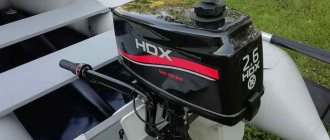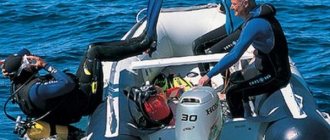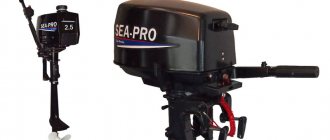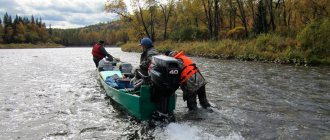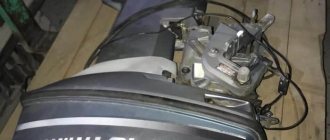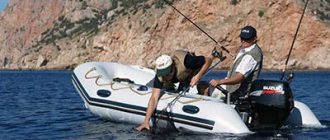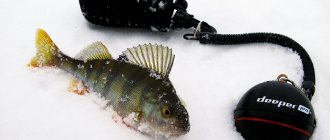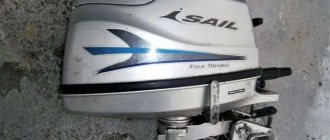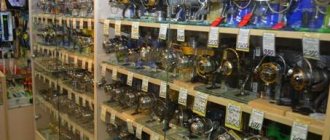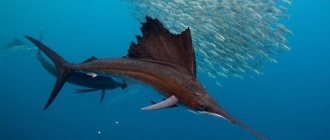What boats are electric motors suitable for? What is the average speed underneath them? How many hours does the battery charge last? Is it true that all electric boat motors are the same? Can they be considered as a replacement for the internal combustion engine? A standard heap of questions that befalls everyone who plans to acquire an electric motor for their boat. So we decided to hit the test on the topic of the day. The idea is simple: take two inflatable PVC boats of different lengths, a pair of traction batteries and several electric boat motors, and then test them on the water. The tasks are clear - to answer the questions listed above.
What have we done?
We took outboard electric motors from four different manufacturers, the most widely represented on the market today - Minn Kota, Outland, Haibo and Flower. Additionally, we were able to test two models from the same manufacturer with different traction characteristics - Outland TP44 and TP34, in order to find out how they differ, except for the numbers on the body. Some of the tested outboard electric motors were completely new, others had been in use for a long time. This did not bother us at all, but, on the contrary, even interested us. I really wanted to raise another question: how the performance characteristics of electric motors change over time. Then we went to a reservoir, where all this stuff was subjected to the most sea trials. Let us note that our goals were not to obtain dry statistical material. We wanted more - to form an informed opinion on how different outboard electric motors behave on different pvc boats.
Materials
For testing, we chose two inflatable pvc boats from Mneva, model Cayman. The first is 330 cm long, the second is 380 cm. There were good reasons for this.
Firstly, the “Cayman” is a very popular model, produced for the second decade - in general, a classic PVC boat with classic shapes and design (photo 1).
Secondly, this model has a lot of imitators among other companies, therefore, by choosing it, we automatically cover a wide range of boats found on our reservoirs. It is no coincidence that these two standard sizes - 330 and 380 cm - are the most popular and universal, applicable both on small forest lakes and on the expanses of large rivers or reservoirs. In addition, these are already serious, rather large PVC boats - I was curious how our boat electric motors would cope with them.
For tests, we took two batteries with capacities of 95 and 100 Ah (photo 2), both acid and traction.
And if the “weaving” was practically new - it only had a couple of fishing trips under its belt, then the “95th” was in use for more than three years and survived about two hundred charge cycles, almost half of its service life. Thus, we wanted to see how the characteristics of the tested electric boat motors would change in combination with such different batteries.
Speed measurements were made using a household GPS navigator Garmin Oregon 200 (photo 3); to determine the values of current and voltage in the circuit while driving, we used a Ts4324 voltammeter (photo 4).
Place and conditions for testing boat electric motors
For testing, we chose a very popular vacation spot among Minsk residents - the Zaslavsky Reservoir, as it is also called - the Minsk Sea. So that the reader can imagine the possible wave height or wind strength, which, of course, left their mark on the test results, I will describe our sea. Its water surface area is about 31.1 km2. Length - about 10 km, width - 4.5 km. Standard depths are 3.5 m, although there are also 8 m. On the test day, the weather was partly cloudy with a light northwest wind at a speed of 3-5 m/s.
About electric boat motors
Every self-respecting manufacturer of electric boat motors has at least four models in its line, differing in power, and, consequently, traction characteristics, overall dimensions and weight.
Thus, the thrust of the smallest models in the line is less than 13 kg (about 0.38 hp) and they are designed, as a rule, for boats with a total curb weight of up to 600 - 800 kg, while the most powerful examples of electric boat motors develop thrust up to 25 kg (0.85 hp) and can be used on ships with a displacement of up to 1.5 tons or more. We deliberately chose for testing electric motors with similar traction characteristics - these are light models for small and medium-sized boats, with stated figures of 32 - 34 lbs, i.e. 14.5-15.5 kg.
Tested outboard electric motors at first inspection
Choosing a boat electric motor.
Home \ Useful information \ Choosing a boat electric motor.
Why do you need an electric boat motor and how to choose an electric motor for an inflatable or plastic boat?
Boat electric motors have long been among the usual and necessary elements of a small vessel. An electric motor for a boat helps solve a number of problems related to fishing, hunting and water recreation:
1. As a propulsion engine, the average mileage on a charged battery is 15-25 km!!! (depending on battery capacity)
2. As an additional option (to the gasoline engine) for small crossings, you do not need to constantly start the main engine to move several tens/hundreds of meters.
3. Silently approach a fishing spot or shooting area.
4. As the main engine when fishing on the track (trolling).
5. For moving through bodies of water where the use of gasoline engines is prohibited.
6. As the main engine during the fish spawning period (from the moment the rivers open until June 10), there is a ban on gasoline engines.
7. As an additional engine when moving in shallow water and when approaching the shore.
What parameters are decisive when choosing an electric trolling motor?
1. Electric motor power (thrust) - indicated in pounds (1 pound = 0.453 kg). For residents of Russia and the CIS countries, power measured in horsepower is more understandable - in the description of each motor the power is indicated in l/s and in pounds Lbs.
There are two ways to select an electric motor:
- By boat length
- By weight of the boat including cargo and passengers
Both methods have a right to exist, but the most optimal and accurate would be to use both methods simultaneously. If you focus on traction in Lbs, then the recommendations are as follows:
| Step speed switching | PWM | ||||||
| Boat length / motor thrust Lbs | 20-24 | 30-34 | 40-44 | 50-55 | 110-130 | 160 | |
| up to 2.8 meters | Yes | Yes | Yes | ||||
| up to 3.8 meters | Yes | Yes | Yes | Yes | |||
| up to 4.5 meters | Yes | Yes | Yes | Yes | Yes | Yes | |
| up to 5 meters | Yes | Yes | Yes | Yes | Yes | ||
| more than 5 meters | Yes | Yes | Yes | ||||
This table is of an average recommendation nature, because There is a significant difference between inflatable boats and plastic ones. For example: for a plastic boat Pella Fiord 4.3 meters long, an electric motor with a thrust of 30 Lbs (Haswing Osapian 30) is quite suitable because she has a very good move. And for an inflatable boat 4.3 meters long, you need a motor with a thrust of at least 40 Lbs (Haswing Osapian 40), or better yet a more powerful one (Haswing Osapian 55 or Haswing PROTRUAR 1.0). This is due to the large windage and worse “hydrodynamics” of an inflatable boat.
Or for a 2.8 meter boat we can recommend a motor with a thrust of 65 Lbs (Haswing PROTRUAR 1.0) and do not offer Haswing Osapian 55, why? But because the first motor has stepless PWM speed switching, in which battery consumption is proportional to the load. And in the case of Haswing Osapian 55 lb , step switching does not significantly reduce energy costs, even if the boat is very small and light - battery consumption will be unreasonably high.
If we consider motors with a thrust of 85, 110, 130 or 160 Lbs, then they are powered by a 24 volt network and require the installation of two series-connected batteries (12+12 volts), which is for a boat with a length of 2.8 m or 3.8 m. not very justified, although it is possible - the choice here is yours.
When selecting a motor, be sure to take into account the total weight of the boat, cargo and passengers.
| Weight of the equipped boat, kg. | 280 | 350 | 400 | 550 | 600 | 650 | 850 | 900 | 1050 | 1150 | 1300 | 1800 | 2000 | 2700 | 3000 |
| Electric motor traction force Lbs | 18 | 20 | 24 | 28 | 30 | 34 | 40 | 45 | 50 | 55 | 65 | 80 | 85 | 110 | 130-160 |
Just like in the previous table, average data is shown here, without taking into account the type of boat, weather conditions and body of water. So always consider your situation and your conditions….
For example: a plastic boat Pella Fiord 4.3 m + 1-2 people, without cargo - a 30 Lbs motor is suitable, but when fully loaded it is better to pay attention to an electric motor 40 Lbs. But as in many other situations, the most win-win option would be Haswing PROTRUAR 1.0.
Important!
Electric trolling motors are not fast and choosing a motor with a very high thrust does not guarantee a significant increase in speed.
2. Deadwood length (legs) varies from 660 mm. up to 1350 mm.
For plastic and inflatable boats with a transom height of 380-400 mm. Optimal are electric motors with a deadwood length of 660 - 760 mm. (when used as the main motor).
If the electric motor is installed on the transom together with a gasoline outboard motor, you should opt for an electric motor with a deadwood length of 750-1050 mm.
3. Options
- Telescopic tiller
- Number of speeds forward/reverse
- Built-in backlight
- Variable angle tiller
- Battery discharge sensor
- Clamps or “crocodiles” for connecting to the battery
- Metal or plastic clamp
- Remote control (for tank electric motors)
- Availability of built-in battery
- Magnetic security check
- Forced water cooling (for powerful motors)
- PWM (continuously variable speed switching) reduces battery consumption
- Protection against accidental start
——————————————————————-
You can view, select and purchase an electric motor for a boat in our store, at the address: St. Petersburg, emb. Chernaya Rechka 1 or by ordering through the online store.
Delivery conditions in Russia can be found in the “Payment and Delivery” section.
You can also select and purchase a traction battery, charger, spare propellers and other accessories for recreation on the water.
Minn Kota Endura Pro 32 electric boat motor
Minn Kota Endura Pro 32 electric boat motor (photo 6). Maximum push thrust 32 lbs = 14.5 kg (in 5th gear), power 0.43 hp, designed for boats with a curb weight of up to 680 kg, rod length 76 cm. Electric motor weight according to the “manual” - 7.3 kg. Number of gears: 5 forward + 3 reverse. The propeller is two-blade. Features: rod made of composite material. And, of course, one cannot help but say that Minn Kota is a recognized trendsetter in this area. Hence the quality of assembly and materials. The electric boat motor we tested has been in use for more than three years. And, which is typical, it does not require any repairs to this day.
Electric boat motors on test
The model range of every self-respecting manufacturer of outboard electric motors consists of at least 4-5 models with different power, thrust and other characteristics in order to cover, as expected, most of the competitive market. The smallest electric motors have a thrust of about 13 kg, which is equivalent to a power of 0.38 hp. They are designed for boats with a curb weight of up to 700 kg. And the most powerful ones have a thrust of 25 kg. (0.85 hp) and are already ready to pull ships with a curb weight of 1.5 tons. We don’t need such powerful ones, our ships are small and God forbid we gain 400 kg of mass, so we chose the “light class” for the test with a thrust of 14 to 16 kg, except for one motor.
Minn Kota Endura Pro 32
Electric motor for Minn Kota Endura Pro 32 boats with a maximum thrust of 14.5 kg. and power 0.43 hp. ready to pull a boat with a total weight of up to 680 kg.
- The rod at the motor is 76 cm.
- Weight – 7.3 kg.
- Gears – 5 forward, 3 reverse
- Propeller – two-blade
What is special about this model is that its rod is made of composite material. Well, among other things, Minn Kota has long been a trendsetter in electric boat manufacturing. High-quality assembly, high-quality materials, reliability. And we just had this used motor, with a mileage of more than 3 years. The owner had no complaints about it during his work. Nothing was repaired and to this day everything works properly.
Flower F33T
The Flover F33T electric boat motor from a well-known brand with a thrust of 15 kg, a power of 0.44 hp, is designed for inflatable boats weighing up to 800 kg.
- Barbell – 75 cm.
- Weight – 6.8 kg.
- Gears – 5 forward, 3 reverse
- Propeller – two-blade
Externally, the motors from Minn Kota and Flover are very similar, but we’ll see what happens in reality. One of the interesting features of the F33T is an LED battery level indicator, which is very convenient. But according to reviews on the forums, not everyone is delighted with this; some say that this function noticeably “eats” energy. Let's see. We received the Flover F33T new, not yet unpacked.
Outland TP 34
Electric motor for a boat model Outland TP 34 with a maximum thrust of 15.4 kg, a power of 0.47 hp. and according to the manufacturer, it is ready to pull a boat up to 1.1 tons of curb weight. Wow, such a promise, compared to Flover and Minn Kota, almost twice as much. The rest of the characteristics are approximately the same. Let's see what the test gives.
- Barbell – 78 cm.
- Weight – 6.7 kg.
- Gears – 5 forward, 2 reverse
- Propeller – two-blade
This is another used motor that successfully ran for 2 seasons without causing problems to its owner.
Outland TP 44
Outland TP 44 electric boat motor with a maximum thrust of as much as 19.9 kg. and power 0.59 hp. The weight of the vessel that it can tow is 1350 kg, again according to the manufacturer.
- Barbell – 91 cm.
- Weight – 9.55 kg.
- Gears – 5 forward, 2 reverse
- Screw – three-blade
This copy came to us not new, but not very shabby either. It was used for less than a season and did not cause any problems or complaints from the owner. We would write down the pluses that the TP 44 has a metal rod and a three-blade propeller. This is the most powerful electric motor in our test and it probably still goes beyond the “most popular” ones.
Haibo ET 34L
The Haibo ET 34L electric motor is externally and structurally identical to motors from Outland. One can even assume that they came from the same workshop/factory. And this confirms that they have the same characteristics. And also designed for a boat with a displacement of 1100 kg.
- Traction – 15.4 kg.
- Power – 0.47 hp.
- Barbell – 78 cm.
- Weight – 6.7 kg.
- Gears – 5 forward, 2 reverse
- Propeller – two-blade
Another used electric motor with a mileage of more than three seasons and again without complaints or breakdowns from the owner. There is such a story on the Internet about Haibo that in 5th gear he can “make” any of his classmates. Let's just check it out.
Boat electric motor Flover F33T
Boat electric motor Flover F33T (photo 7). The thrust in the clean and jerk is, of course, 33 lbs, which is 15 kg. Power 0.44 l. With. Designed for boats with a curb weight of up to 800 kg. The length of the composite rod is 75 cm, the stated weight is 6.8 kg. Number of gears 5/3. The propeller is two-bladed. The naked eye can see the resemblance between Flover and Minn Kota (photo 8). Well, this is intriguing - will the similarity be only superficial? Features: the model has an LED indicator of the battery charge level (photo 9). Reviews about this option are very contradictory - from enthusiastic to negative, due to the increase in electricity consumption by the electric motor. Flover F33T came to us in its original packaging.
Outland TP 34 electric boat motor
Outland TP 34 electric boat motor (photo 10). Maximum thrust in clean and jerk 34 lbs = 15.4 kg, power 0.47 hp. With. The manufacturer claims that it is designed for a boat's curb weight of up to 1100 kg. Claimed weight: 6.7 kg. Bar length: 78 cm. Number of gears: 5/2. The propeller is two-bladed. At the time of testing, it had been in use for more than two years. There were no problems during use. Please note how different the declared values of the permissible weight of the boat with which the Outland TP 34 and Minn Kota Endura Pro 32 are applicable: the difference is almost twofold! 1100 versus 680 kg. This is intriguing, since the remaining declared parameters of these two outboard electric motors, if at all, differ, are not significant. It turns out that either someone is playing it safe, or someone is giving unrealistic numbers - we hope this will become clearer in the test.
Rules for selecting an electric boat motor
Outboard electric motor for a PVC boat.
A suitable model is selected based on the characteristics and required tasks of the boat.
- For example, if your boat is up to 3 meters long, and you have to load it no more than 500 kg, pay attention to electric motors with a power of 0.3-0.4 hp.
- Boats with a length of 3-4 meters and a carrying capacity of up to 850 kg require more powerful motors of 0.5-0.6 horses.
- And finally, large boats with a length of more than 4 meters and loaded up to 1,000 kg of weight require electric motors of at least 0.8 horsepower.
Outland TP44 electric boat motor
Outland TP44 electric boat motor (photo 11). Maximum deadlift in clean and jerk is 44 lbs = 19.95 kg. Power 0.59 l. With. The maximum displacement of the boat is up to 1350 kg. The weight of the boat electric motor according to the passport is 9.55 kg. The design is similar to the younger model TP34. At the time of testing, the electric motor had not been in use for a full season and did not cause any complaints. Among the features are a metal rod 91 cm long and a three-blade propeller, which suggests that the electric motor is applicable on fairly large boats with a high side. It is this unit that goes beyond the “light class” of boat electric motors chosen for testing.
Kinds
At the installation location
- Suspended - secured to the transom with special threaded clamps. Easily installed next to the main engine and moved if necessary. Usually synchronous motors with permanent magnets or asynchronous alternating current are used. They are brushless type with no wearing parts and no maintenance required.
- Bow - placed on the boat's tank on the mounting platform.
- Mounted - installed on the cavitation plate of the main outboard motor with the ability to remotely control the speed and direction of rotation of the propeller.
By type of control
- Tiller - using a lever on the motor, which not only changes gears and regulates speed, but also turns the motor, changing the direction of movement.
- Foot - using a pedal that acts as a “gas” (throttle). A separate steering control is required, since the motor is mounted motionless and does not turn in different directions.
- From the remote control - on large expensive watercraft.
By cost
- Budget models priced less than 10 thousand rubles - without a smooth gear shift system, with low speeds and low power. Traction force is no more than 0.5 hp. and voltage 12V.
- The average price segment is less than 50 thousand rubles - power is less than 0.8 hp, telescopic tiller or foot control system, and also with smooth switching.
- Premium class at a price of more than 50 thousand rubles - models from the best manufacturers made from quality materials with high traction, reliability and a large range of additional options - autopilot, remote control, built-in sonars, etc.
Boat electric motor Haibo ET 34L
Boat electric motor Haibo ET 34L (photo 12). The electric boat motor is simply identical in design and appearance to the Outland. Moreover, we would venture to assume that they were produced at the same plant - well, just twin brothers! Therefore, we were not at all surprised that the declared characteristics of these two electric motors are the same: maximum push thrust 34 lbs = 15.4 kg, power 0.47 hp. s, boat displacement up to 1100 kg. The length of the rod is 78 cm, the weight of the electric motor is 6.7 kg. Came into our hands second-hand - about three years without complaints of indisposition. The intrigue is that rumors are actively being circulated in the Internet community that, allegedly, Haibo, when moving at the last, fifth speed, “makes” all its classmates and even some electric motors, which is more powerful. This, of course, we will also clarify today.
Watersnake electric motors
Home \ Online Store \ Electric motors and batteries \ Electric motors \ Watersnake electric motors
Sort by: Name Price Reset
- View:
Boat electric motors Watersnake
from the Australian company Jarvis Walker WaterSnake
, this is a combination of reliability and power with an affordable price.
The Jarvis Walker WaterSnake line of motors is represented by a wide range of models - for inflatable, plastic and aluminum boats and boats.
The lightest electric motor T18-FW weighs only 2.5 kg, and the flagship in the WaterSnake motor line is
SWRT 54 is equipped with a double remote control, with which you can adjust not only the speed, but also the direction of movement of the boat.
Features of the series:
Asp/T series - for boats up to 3m.
Boat electric motors of the Asp series are designed for small inflatable and plastic boats.
The trolling motors presented in this section have a short deadwood (600 mm.) made of aluminum alloy and a propeller shaft made of stainless steel, compact dimensions and low weight (2.5 kg.) all this makes them most suitable for installation on small boats, up to 3 meters.
Models are presented for use in reservoirs with fresh water - T18 and T24 salt water - T18-SW and T24-SW
Electric motors T24 and T24-SW are equipped with a convenient clamp for adjusting the motor in three planes.
Saltwater electric boat motor models are equipped with a more corrosion-resistant propeller shaft and have a white and black body color.
Tracer/FWT Series 28 - 54 Lbs.
Tracer Series electric motors are the most popular line of electric boat motors for trolling from Jarvis Marine - WaterSnake.
A wide power range from 28 Lbs (0.39 hp) to 54 Lbs (0.77 hp) allows the use of electric motors on boats weighing up to 1100 kg.
The presence of a telescopic tiller, adjustable propeller depth, deadwood tilt for movement in shallow water and a 7-speed speed controller make the Tracer series electric boat motors the most popular among fishing enthusiasts.
Venom/SXB series - discharge indicator, deadwood 660mm.
Electric motors of the Venom series of the new SX modification are designed specifically for inflatable boats with a standard transom height of 370 - 420 mm.
The deadwood is 660 mm long, made of composite materials and combines strength and flexibility in case of encountering an underwater obstacle.
The motors have a telescopic tiller, a digital voltmeter, and are adjustable for the angle of inclination and depth of the propeller.
Available in two versions: SXB - for fresh water, SXW - for salt and fresh water.
Advance series - discharge indicator, additional. adjustments
One of the most technologically advanced series of electric motors for boats is WATERSNAKE Advance. All motors are equipped with a battery charge indicator, and also have a system for adjusting the telescopic tiller for tilt and rotation, which ensures convenient placement of the helmsman in the cockpit of the boat. The top model Advance AD-TV is equipped with a pulse-width modulator (PWM - smooth speed control), which allows you to significantly save battery power. Rotating the tiller 180 degrees allows you to use Advance series electric boat motors as a bow motor.
Shadow SERIES - bow with remote control
Bow electric motors DR series Shadow are controlled remotely from a foot control (cable length 5 meters), leaving the operator's hands free. A control unit with smooth speed control (PWM) is integrated into the motor. The mounting bracket allows you to place the motor on the side of the boat.
The RT electric motors of the Shadow series have two alternative remote control systems: control via a foot control, as in the DR models, and radio control from a compact remote control, which is conveniently attached to a wrist strap. The motor comes complete with a foot control and two wireless remote controls (one spare), all models have a speed controller (PWM) and a bracket that fixes the vertical position of the shaft.
Venom / ETW-LED Series - LED lighting
ETW-LED electric motors in the Venom line are equipped with an LED light on the bottom cover of the tiller for excellent fishing in low light conditions. Like all motors in this series, they have a transom clamp that regulates the depth of the motor, a stainless steel propeller shaft, and a non-engaging propeller.
Ambush series / bow (tank), tiller
The newest bow electric motors in the Ambush series for professional anglers have tiller control and a unique folding bracket that locks the vertical position of the sternwood.
Let's start testing boat electric motors
First, we weighed each of the electric boat motors we tested. Measurements were made on Nevskie table scales (photo 13) with a limit of 15 kg. As can be seen from Table 1, our results differ slightly from those stated by the manufacturer. The biggest difference with the Minn Kota Enduro Pro 32 is that it is more than 700 grams lighter, which, you see, is significant. Apparently, the Americans underestimated the lightness of the composite bar.
Next, we sequentially measured the current consumption for each gear of each electric motor. The results are shown in Table 2.
Why was it necessary to measure the current? The point is this: all other things being equal, of the two electric boat motors, the fastest one will be the one that consumes higher currents. That is, this table gives hints for future speed tests and will allow us in the future, together with the results of measuring the speed of PVC boats, to determine the efficiency of the tested boat electric motor. What should you pay attention to here?
Firstly, from Table 2 it can be seen that the current values in the corresponding gears of electric motors of the same class, if they differ, are insignificant. This indirectly indicates that their speeds should be approximately equal, other things being equal. If a serious difference is discovered, it means that the efficiency of boat electric motors is different.
Secondly, note that the Minn Kota Enduro Pro 32 in 5th gear draws almost the same current as the most powerful Outland ET 44 in 4th gear. Do you see where we're going with this? Let's check if they have the same speed.
Thirdly, Haibo ET34L and Outland ET 34 have identical current values. This is another reason to claim that these electric boat motors have one parent.
Comparing the Minn Kota Enduro Pro 32 and the replica from Flover, you can see similar data. Differences occur only at first, second and fourth speeds. At the same time, we must take into account the fact that Flover is most likely copying the new ZOS motor, which appeared in 2012, while our Minn Kota electric motor is three years old.
Test of electric boat motors for maximum speed
Let us recall that the speed measurements were made using a Garmin Oregon 200 GPS navigator. Of course, we cannot avoid the errors of GPS devices for non-military purposes here. However, all subjects were in equal conditions. The measurements were carried out in the following way: an inflatable PVC boat “Cayman 330” was equipped with a test electric motor, and then covered the distance between two given points on the reservoir. For the entire series of tests, these points, and, therefore, the direction vector of movement, remained unchanged - in our case, this is the distance from the pier to the island, which was 0.34 km according to the navigator. Moreover, when moving from the pier to the island, the wind prevailed in the tail direction, and back - in the opposite direction. This coast-island-shore route was overcome in each of the five gears in turn, and we placed the value of the maximum speed (in km/h) during the passage of the track in Table 3.
All tests were carried out three times - with one, two and three passengers on board - these values correspond to columns with a load of 80, 160 and 220 kg, respectively. For the sake of the purity of the experiment, we note that we did not take into account the mass of the battery and equipment in the boat, although this is still about 40 kg. In addition, we recorded the speed with and against the wind - and derived the average speed, which you can also see in Table 4 for each case.
As it should have happened, the most powerful outboard electric motor, Outland TP44, also showed the highest speed according to the results of all tests. However, we were quite surprised by the fact that the Haibo ET34L came very close to it with a load of 220 kg, and with a load of 80 and 160 kg in 5th gear it was even a little faster! It is also curious that the Haibo ET34L clone - the Outland TP34 model - showed worse results than the leaders. It turns out that the insides of Outland and Haibo are still different. Overall, the results were pretty even. The only thing that goes beyond this nice series is the speed values we obtained for the Outland TP44.
Please note that when driving in all gears, with the exception of 3rd and 4th, the maximum speed values were recorded, paradoxically, at the maximum load of the boat. How to explain this? It seems that the answer lies in a combination of reasons: from changes for the better in the hydrodynamic parameters of the boat when optimal loading is achieved to the imperfection of measuring instruments and techniques. In any case, we assume that the test conditions remained unchanged for all models.
As expected, the slowest result was shown by the smallest model, Minn Kota Endura Pro 32. However, let’s not rush to final conclusions; let’s wait until the second, no less important test, “Electricity Consumption.”
Only Flower 33T was not mentioned. In general, he has very good results. Boat speeds under this outboard motor are exactly where they should be: between the Endura Pro 32 on one side and the more powerful ET34L and TP34 on the other. Next, we repeated the tests of boat electric motors, only on a larger Cayman 380 boat. This time we did it only once - with a load of 160 kg, in order to compare the results with a smaller boat.
We have already made conclusions about electric boat motors. Now let’s compare the results of the same electric motors on different boats. To be honest, the results were not quite what we expected. It was thought that on a smaller boat (read: lighter, with less drag, etc.) our electric boat motors would definitely show higher speeds. In fact, this is what happened: all electric motors, except one, showed approximately the same results when used on two different boats. How is this possible?
Well, first, let's assume that the Cayman 380 was better (more evenly) loaded than the 330 when tested with two and three people on board. Secondly, the “380” has higher seaworthiness; in our case, it burrowed less into the wave, which, although small, still left its mark. Thirdly, in the case of electric boat motors, we are dealing, as you can see, with speeds that are far from cosmic. Rather, these are the indicators of a pedestrian with a firm gait. So it turns out that here the laws of physics, which we are accustomed to taking into account when planing, do not apply - or act in the opposite order.
As for the most powerful Outland TP44 in our test today, it showed a higher average speed of 5.6 km/h versus 5.1 km/h on a larger boat. The only logical explanation besides all of the above here is the length of the bar. A larger boat requires a longer arm to divert the pushing force. In this case, using the same length of the rod (and we left the immersion depth of the boat electric motor fixed for all experiments), in the case of the Cayman 380 boat it turned out to be “more correctly” selected than for the smaller Cayman 330, which made it possible to achieve more high speed.
Top 3 electric boat motors
1. The first line of our rating is occupied by the Minn Kota model Endura C2 30
.
This electric motor meets the expectations of customers because it meets high quality requirements and is comfortable when driving on water.
Reference: American began its history in the 30s of the twentieth century. The name MINNesota-North DaKOTA comes from its geographic location at the intersection of Minnesota and North Dakota. Since its founding, the company has been producing trolling motors and occupying a leading position in the market. The engines are truly quiet and at the same time reliable, causing minimal damage to the environment.
The Minn Kota Endura C2 30 engine is powered by a battery and has a power of 30 Lbs. This motor, unlike others, does not heat up even after prolonged use, which guarantees long service life at maximum conditions. There are eight in total: 5 forward gears and 3 reverse gears.
The body is made of carbon fiber composite. Even when colliding with obstacles, the electric motor remains intact, because the strength of the material is successfully combined with flexibility. In the event of an impact, it may bend, but after the load is removed it gradually returns to its previous position.
Rod length – 760 mm. Mounting clamps provide the ability to install the engine on almost any type of boat. The depth of immersion in water is regulated by a special clamp, and a special screw is made so that algae does not cling to it.
2. On the second line is the Motor Guide R3 30 HT
from another American brand MotorGuide (MotorGuide).
The company's products have proven themselves to be the best. The motors are almost silent, comfortable, light and high-torque, and serve on any vessel, from a single-seat inflatable to a solid multi-seat boat.
Information: its history dates back to 1961. Then Garrett Harris decided to create a motor not for racing, but suitable for leisurely fishing. When developing the control system, Garrett came up with the idea of a spring drive, which allowed him to control the motor and boat using his feet. The invention was appreciated by local fishermen. This is how the MotorGuide brand was born. The company is now part of the Mercury Marine concern.
The MotorGuide R3 30 HT engine is very light, weighing only 6.1 kg. It is equipped with a three-bladed propeller, so with a power of 30 Lbs it is capable of pulling a loaded boat weighing up to 800 kg. This indicator attracts anglers who are not ready to purchase a higher class motor.
3. In third place is the WaterSnakeFWT30TH
from Australian (Jarvis Walker).
Information: the brand received the name of its founder, avid fisherman Jim “Jarvis” Walker in 1964. He was a successful fisherman, tackle inventor and enterprising businessman. Today, the company continues to produce fishing equipment; the Water Snake division, located in China, produces electric motors. .
The Water Snake FWT30TH model is a budget option. Prices start from 9,500 rubles. At the same time, it has good speed characteristics and can operate smoothly at a speed of 5 km/h. Maximum thrust – 600 kg, power – 30 Lbs. This means that the engine will take out a boat up to 3.8 meters long with two passengers and equipment on board. The telescopic tiller makes steering the boat even more convenient and safe. The only drawback is the Chinese assembly.
Efficiency test for electric boat motors
The essence of this test is to determine how long an electric boat motor can operate in each gear engaged from a fully charged 100 A/h battery. The test method is the most empirical one. Don’t ask how long this testing lasted... Let’s just say that the charging time for a battery of such capacity alone is more than 24 hours. The results are in Table 5.
Everything looks consistent here. The longest lasting one at fifth speed, as expected, was the miniature Minn Kota Enduro Pro 32, which is logical - the least powerful and economical. The lowest figure, as expected, is the most powerful, and therefore energy-intensive, Outland TR 44.
Test for operating time of boat electric motors on different batteries
The test is designed to check how much the characteristics of rechargeable batteries drop as they are used, that is, as the battery wears out. So, for the Cayman 380 boat with a load of 160 kg! and the Haibo ET34L motor, we tested with a traction acid battery with a capacity of 100 A/h and additionally with a capacity of 95 A/h, which was used intensively for 3 years (lifetime - approximately 50%).
As you can see, when used correctly, the battery practically does not lose its properties throughout its entire service life - the results are almost no different from those of a new battery. Let us recall only the main differences-rules:
— lead battery — does not tolerate deep discharge, not suitable for electric boat motors;
- lead traction - tolerates deep discharge, but does not tolerate long-term storage in this condition (otherwise the plates crumble and capacity is lost), suitable for outboard electric motors;
- gel - tolerates both deep discharge and storage, suitable for boat electric motors, however, with all its advantages, it is approximately twice as expensive as a lead one of similar capacity.
The service life of a lead traction battery with proper operation is about 400 cycles (4 - 5 years). The basic rule: do not charge the battery with high currents - a maximum of 8–10 A.
